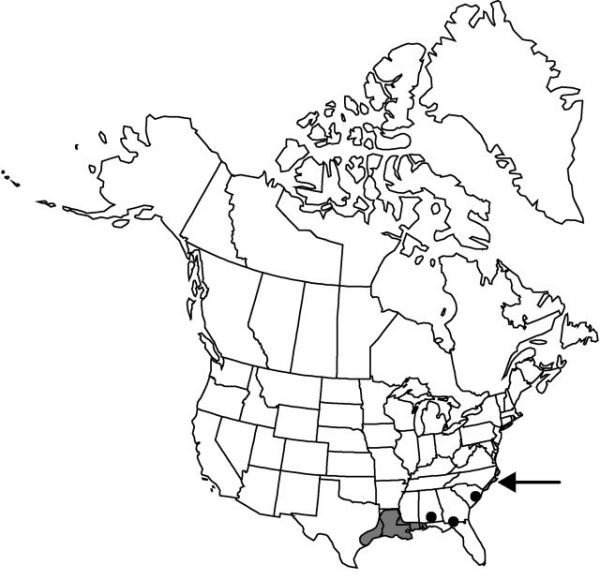Difference between revisions of "Zephyranthes candida"
Bot. Mag. 53: plate 2607. 1826.
FNA>Volume Importer |
FNA>Volume Importer |
||
| Line 15: | Line 15: | ||
|name=Argyropsis candida | |name=Argyropsis candida | ||
|authority=(Lindley) M. Roemer | |authority=(Lindley) M. Roemer | ||
| − | }}{{Treatment/ID/Synonym | + | }} {{Treatment/ID/Synonym |
|name=Atamosco candida | |name=Atamosco candida | ||
|authority=(Lindley) Sasaki | |authority=(Lindley) Sasaki | ||
| − | }}{{Treatment/ID/Synonym | + | }} {{Treatment/ID/Synonym |
|name=Plectronema candida | |name=Plectronema candida | ||
|authority=(Lindley) Rafinesque | |authority=(Lindley) Rafinesque | ||
| Line 36: | Line 36: | ||
|elevation=0-200 m | |elevation=0-200 m | ||
|distribution=Ala.;Fla.;Ga.;La.;Miss.;N.C.;S.C.;Tex.;South America (Argentina;Peru;Uruguay). | |distribution=Ala.;Fla.;Ga.;La.;Miss.;N.C.;S.C.;Tex.;South America (Argentina;Peru;Uruguay). | ||
| − | |discussion=<p>W. Herbert (1837) suggested that Zephyranthes candida might belong in a segregate genus, and within ten years Rafinesque and M. Roemer each separated it from Zephyranthes. Its leaves are about twice as thick as those of other species in the genus, and they persist through winter frosts and snow, a rare, if not unique, characteristic in Zephyranthes. The stigmatic lobes are not globose, as in Z. chlorosolen, but are somewhat erect and might be described as very abbreviated linear lobes; a careful study of fresh stigmas of “capitate” species is in order. Also, the chromosome complement of Z. candida appears to be anomalous within Zephyranthes. The species has been maintained in Zephyranthes for more than a century, but were Herbert, Rafinesque, and Roemer correct after all?</p> | + | |discussion=<p>W. Herbert (1837) suggested that <i>Zephyranthes candida</i> might belong in a segregate genus, and within ten years Rafinesque and M. Roemer each separated it from <i>Zephyranthes</i>. Its leaves are about twice as thick as those of other species in the genus, and they persist through winter frosts and snow, a rare, if not unique, characteristic in <i>Zephyranthes</i>. The stigmatic lobes are not globose, as in <i>Z. chlorosolen</i>, but are somewhat erect and might be described as very abbreviated linear lobes; a careful study of fresh stigmas of “capitate” species is in order. Also, the chromosome complement of <i>Z. candida</i> appears to be anomalous within <i>Zephyranthes</i>. The species has been maintained in <i>Zephyranthes</i> for more than a century, but were Herbert, Rafinesque, and Roemer correct after all?</p> |
|tables= | |tables= | ||
|references= | |references= | ||
| Line 61: | Line 61: | ||
|publication year=1826 | |publication year=1826 | ||
|special status= | |special status= | ||
| − | |source xml=https://jpend@bitbucket.org/aafc-mbb/fna-data-curation.git/src/ | + | |source xml=https://jpend@bitbucket.org/aafc-mbb/fna-data-curation.git/src/8f726806613d60c220dc4493de13607dd3150896/coarse_grained_fna_xml/V26/V26_588.xml |
|genus=Zephyranthes | |genus=Zephyranthes | ||
|species=Zephyranthes candida | |species=Zephyranthes candida | ||
Revision as of 16:45, 18 September 2019
Leaf blade glossy deep green, to 3 mm wide. Spathe (1.8–)2–4 cm. Flowers erect; perianth white, sometimes pinkish abaxially, subrotate, 3–4.5 cm; perianth tube green, 0.1–0.4 cm, increasing in diam., less than 1/4 times perianth length, 1/5–1/3 times filament length, ca. 1/10 times spathe length; tepals not reflexed; stamens diverging, subequal; filaments filiform, 1–1.4 cm; anthers 5–8 mm; style longer than perianth tube; stigma capitate, usually among or exserted less than 2 mm beyond anthers; pedicel (0.4–)1–2.5 cm, usually shorter than spathe. 2n = 38.
Phenology: Flowering summer–mid fall (Jun–Nov).
Habitat: Sandy humus soil, coastal plains
Elevation: 0-200 m
Distribution

Ala., Fla., Ga., La., Miss., N.C., S.C., Tex., South America (Argentina, Peru, Uruguay).
Discussion
W. Herbert (1837) suggested that Zephyranthes candida might belong in a segregate genus, and within ten years Rafinesque and M. Roemer each separated it from Zephyranthes. Its leaves are about twice as thick as those of other species in the genus, and they persist through winter frosts and snow, a rare, if not unique, characteristic in Zephyranthes. The stigmatic lobes are not globose, as in Z. chlorosolen, but are somewhat erect and might be described as very abbreviated linear lobes; a careful study of fresh stigmas of “capitate” species is in order. Also, the chromosome complement of Z. candida appears to be anomalous within Zephyranthes. The species has been maintained in Zephyranthes for more than a century, but were Herbert, Rafinesque, and Roemer correct after all?
Selected References
None.